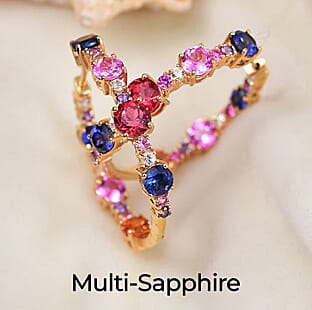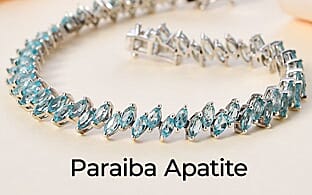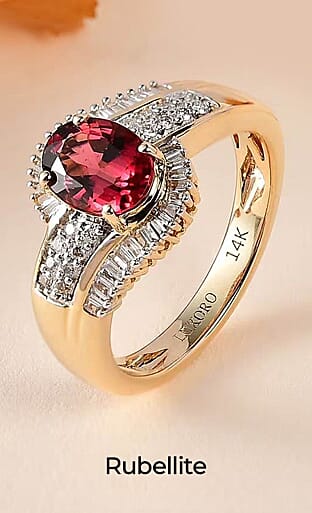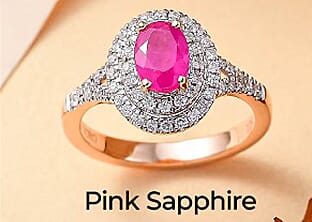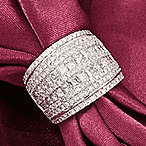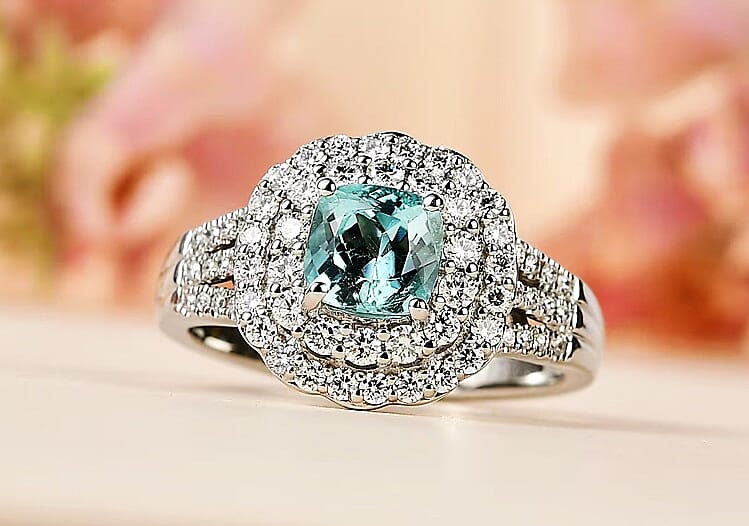
TOURMALINE GEMSTONE
Tourmalines are among the most versatile gemstones, celebrated for their dazzling range of colors and remarkable clarity. From vibrant pink and electric green to the rare and coveted Paraiba blue, each variety showcases its own charm. This gemstone's wide color spectrum and durability make it a favorite for both collectors and designers.
TABLE OF CONTENTS
1. Why is Tourmaline So Important?
2. Determining Tourmaline’s Value
3. Why Are Different Grades Of Tourmaline?
4. Caring For Tourmaline
5. Who Can Wear Tourmaline?
6. How Does Moissanite Compare to Other Similar Gemstones?
7. Properties Of Tourmaline
8. Tourmaline Facts
9. Tourmaline FAQs
IMPORTANCE
Why Is Tourmaline So Important?
Tourmaline has long been prized for its aesthetic appeal and remarkable diversity of colors, ranging from vivid pinks and deep greens to electric blues and rich reds. This makes it one of the most versatile and sought-after gemstones in the world of jewelry design. Beyond its beauty, tourmaline is also believed to possess powerful metaphysical and healing properties, such as promoting emotional balance and protecting against negative energies. These qualities make it especially popular among spiritual practitioners and crystal enthusiasts. As the birthstone for October, tourmaline holds additional significance, symbolizing love, creativity, and protection for those born in that month.
VALUE
Determining Tourmaline’s Value
The value of tourmaline is determined by several factors, including its color, cut, clarity, carat weight, and origin. Color is the most critical factor, especially for rare varieties like Paraiba and rubellite.
COLOR
Tourmaline’s color is its most important value factor, ranging from neon blue Paraiba to deep red rubellite. Pure hues without secondary tones are most valuable. Medium to dark tones are preferred in green and pink varieties. High saturation, especially in vivid blues and reds, significantly increases value, making color the key to tourmaline's appeal.
Clarity
Clarity refers to the presence of inclusions or internal flaws within the gemstone. While inclusions are common in tourmalines, high-quality stones with minimal inclusions are more valuable. Transparent stones with high clarity are particularly prized.
Cut
Tourmaline can be cut into various shapes, from traditional rounds and ovals to unique cuts like pears and emerald shapes. The cut of a tourmaline can significantly influence its brilliance and overall beauty.
Carat
Like most gemstones, a tourmaline's carat weight can significantly affect its value. Larger stones, especially those with vivid colors and good clarity, are rarer and, therefore, more valuable.
Did You Know?
Moissanite offers exceptional brilliance, durability, and affordability, making it a stunning alternative to traditional gemstones. Available in various shapes and cuts, it provides timeless beauty with ethical and sustainable benefits.
Quality Grades
Different Grades of Tourmaline:
Tourmaline is graded based on its color, clarity, cut, and overall quality. The finest grades display vivid, evenly distributed color with minimal inclusions. Lower grades may have visible flaws or uneven tones, affecting their brilliance and value.
AAA (Top Grade):
These stones exhibit the best color, clarity, and cut. They are rare and highly valuable.
AA (Fine Grade):
Once the crystals are formed, they are cut and polished to enhance their brilliance and ready for setting in jewelry. High-quality tourmalines with slight inclusions or color variations.
A (Commercial Grade):
Tourmalines with visible inclusions or less desirable colors but still attractive and suitable for various types of jewelry.
Storage
Caring For Tourmaline
Tourmaline ranks 7 and 7.5 on the Mohs hardness scale, making it relatively durable for everyday wear. However, proper care is essential to maintain its beauty.

• Regular Cleaning:
Clean tourmaline with warm, soapy water and a soft brush. Avoid using ultrasonic cleaners or harsh chemicals, as they can damage the stone.
• Storage
To prevent scratching, store tourmaline separately from harder gemstones. Could you keep it in a soft cloth or padded box?
• Wear with Care:
While durable, tourmaline should be protected from hard knocks and extreme temperature changes, which can cause internal fractures.
IDEAL CHOICE
Who Can Wear Tourmaline?
Tourmaline is a versatile gemstone that anyone can wear regardless of their astrological sign or personal style. It is especially popular among those born in October, as it is one of the month's birthstones. Tourmaline is also believed to have protective and healing properties, making it an excellent choice for those seeking spiritual benefits from their jewelry.
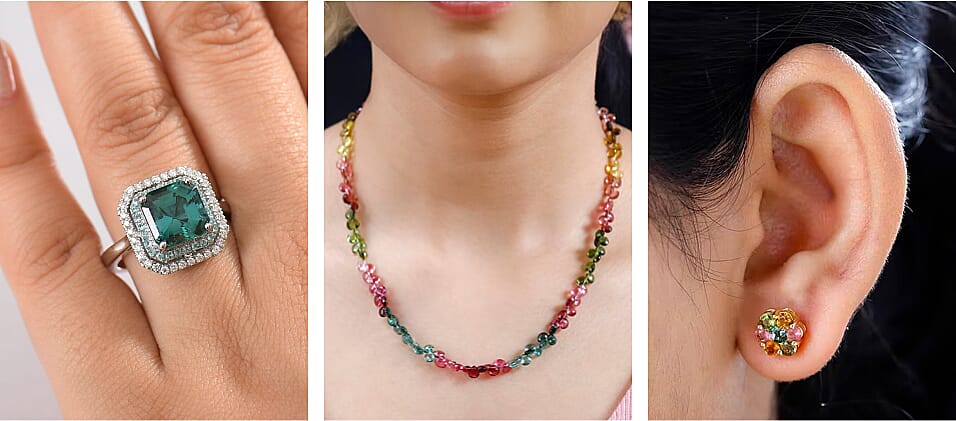
Difference
How Does Tourmaline Compare to Other Gemstones?
Tourmaline is often compared to other gemstones, such as sapphire, emerald, and ruby, due to its wide range of colors and versatility. Below are some critical comparisons:
People also like:
• Multi-Sapphire vs. Multi-Tourmaline:
Both multi-sapphire and multi-tourmaline gemstones display various colors, but tourmaline tends to have a wider variety of hues. Sapphires are generally more durable and prized for their hardness, while tourmalines are valued for their vibrant colors.
• Green Tourmaline vs Emerald:
Green tourmaline can resemble emerald in color, but tourmaline is generally less expensive and more durable. Emeralds are prized for their deep green hues and historical significance, while green tourmalines offer a more affordable alternative with similar beauty.
• Rubellite (Red Tourmaline) vs Ruby:
Rubellite is often compared to ruby, a red variety of tourmaline. While rubies are typically more valuable and sought after, rubellite offers a unique, intense red color at a more affordable price.
• Paraiba Tourmaline vs. Paraiba Apatite:
Both paraiba tourmaline and paraiba apatite are known for their neon blue or green colors. However, paraiba tourmaline is far rarer and more valuable than paraiba apatite, which tends to be more affordable but less durable.
Properties
Tourmaline Properties
Tourmaline is the birthstone for October and is believed to bring protection, love, and good fortune to those born in this month. In astrology, it is associated with Venus and is thought to enhance relationships, creativity, and emotional balance by warding off negative energies.
Tourmaline is also known for its strong metaphysical and healing properties. Different colors are believed to influence different energies—black tourmaline offers protection, while pink promotes compassion. It is also linked to chakra balance and overall emotional well-being.
Tourmaline Facts
MOHS HARDNESS
7 to 7.5
COLOR
Pink, red, yellow, blue, green, bi-color, multi-color set
TREATMENT
May undergo additional treatment to improve its brilliance.
DISCOVERY
Brazil, Madagascar, Afghanistan, Mozambique, and the United States.
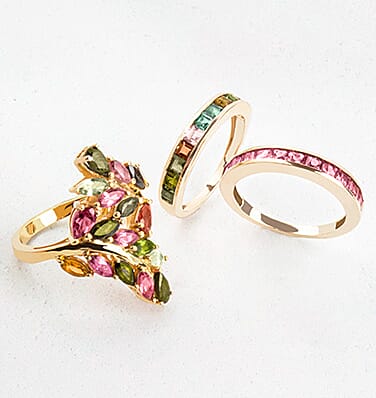
Tourmaline FAQ'S
Q. What colors does tourmaline come in?
A. Tourmaline is one of the most colorful gemstones, known for its wide range of colors, including pink, green, blue, red, and even multicolored varieties.
Q. What is unique about tourmaline's color-changing ability?
A. Some tourmaline varieties can change color when viewed under different lighting conditions or from various angles, a phenomenon known as pleochroism.
Q. How is tourmaline formed?
A. Tourmaline is a complex borosilicate mineral that forms in igneous and metamorphic rocks, often found in granite and pegmatites.
Q. What is the significance of tourmaline in metaphysical beliefs?
A. Tourmaline is believed to have protective and healing properties. Different colors are associated with various energies, like black tourmaline for protection and pink for love.
Q. How should tourmaline be cared for?
A. Tourmaline should be cleaned with warm, soapy water and a soft brush, avoiding harsh chemicals and ultrasonic cleaners to prevent damage.
